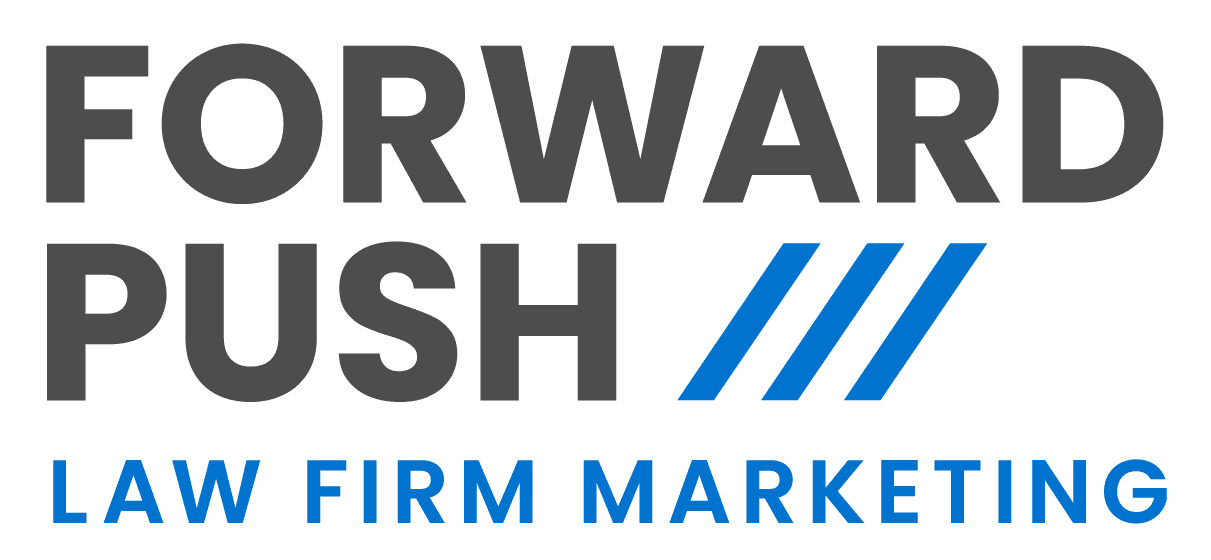By Marc Apple ● ● 5 min read

Table of Contents
TL:DR SEO and advertising work best together when law firms use them strategically. SEO builds long-term visibility and credibility, while paid advertising delivers immediate visibility for high-intent keywords and markets.
No time to read? Listen to a conversation about this blog post instead.
Getting your law firm noticed online isn’t just about doing one thing well—it’s about doing the right things in the right order. SEO and digital advertising are two of the most powerful tools available, but their impact multiplies when they work together.
In this article, we’ll walk through how law firms can balance long-term SEO growth with targeted paid ads, what each strategy is best for, and how to avoid wasting your marketing budget.

Effective SEO for law firms goes beyond keywords
What SEO Really Means for Law Firms
Effective SEO for law firms goes beyond keywords. It involves optimizing your website’s technical structure, creating client-focused content, and strengthening local search presence. Key components include:
- On-page SEO: Writing strong title tags and meta descriptions, using schema markup, and optimizing page structure.
- Local SEO: Verifying and managing your Google Business Profile, maintaining consistent NAP (Name, Address, Phone) across directories, and gathering reviews.
- Content strategy: Publishing FAQs, blog posts, and detailed service pages that reflect your clients’ real questions.
To dive deeper into SEO strategies specific to law firms, explore our article on Why Local SEO Is Essential for Law Firms.
SEO isn’t just about keywords—it’s about being discoverable when potential clients are actively searching. For law firms, this means optimizing for:
- Local searches (e.g., “family lawyer near me”)
- Specific practice areas (e.g., “divorce mediation for professionals”)
- Trust-building content (blogs, FAQs, and service pages)
More than half of legal clients begin their search for an attorney online, according to numerous industry studies. That makes your digital presence—not just your reputation—the first thing most prospects will encounter. This means your visibility in Google Maps, local packs, and organic results is often the first impression.

More than half of legal clients begin their search for an attorney online
Why SEO is a Long-Term Asset
One of SEO’s biggest strengths is its ability to generate compounding value. With consistent effort, rankings improve, traffic builds, and trust grows organically.
That said, it takes time. SEO won’t produce instant leads—it’s a snowball that grows with content updates, technical improvements, reviews, and link-building.
Firms that invest in SEO early tend to pay less over time for client acquisition, since they’re earning visibility rather than buying it.
When Paid Advertising Makes Sense
Here’s how Google’s two main advertising options compare:
| Ad Type | How It Works | Best For |
|---|---|---|
| Google LSAs | Pay-per-lead model; appears at top of search with ‘Google Screened’ badge | Fast lead flow and high-trust positioning |
| Google Search Ads | Pay-per-click model; customizable by keywords, copy, and landing page | Strategic campaigns with detailed audience control |
Curious how Local Services Ads (LSAs) fit into your strategy? Check out our article on what LSAs mean for legal marketing.
Paid ads—like Google Search Ads or Local Services Ads (LSAs)—are ideal for:
- Immediate lead generation
- Testing new practice areas or locations
- Seasonal or urgent campaigns (e.g., “holiday custody modifications”)
Unlike SEO, paid ads place you at the top of search results almost instantly. But once you stop paying, visibility disappears. That’s why advertising should supplement—not replace—your long-term SEO strategy.
Smart Ways to Combine SEO and Ads
Many law firms wonder how to balance investment between short-term and long-term channels. A typical strategy might look like this:
| Firm Stage | SEO Budget Share | Ad Budget Share | Goal |
| New firm | 30% | 70% | Generate fast leads while SEO builds |
| Growing firm | 50% | 50% | Balance new client flow with brand equity |
| Established firm | 70% | 30% | Sustain leads with strong organic traffic |
To help visualize when to use each tactic, here’s a side-by-side breakdown of where SEO and ads each shine:
| Strategy | Use SEO For… | Use Ads For… |
| Brand building | Long-term authority and trust | Name recall and broad awareness |
| Lead generation | Capturing clients doing deep research | Quick wins for high-intent searches |
| Geographic reach | Ranking in your local and surrounding areas | Expanding to new markets fast |
| Service growth | Creating content for niche legal areas | Testing demand for new services |
Avoiding the Most Common Mistake
We’ve seen law firms rely heavily on Google Ads for years—only to discover that once the ads stop, the leads disappear. The ones who balanced their ad spend with content and SEO early on now generate consistent, inbound leads month after month. Too often, though, firms pour money into ads without fixing the basics—like a slow website, weak content, or poor online reviews. If your website doesn’t convert, ads will only magnify the problem.
Before you spend on advertising, make sure your SEO foundation is solid. That includes:
- A fast, mobile-friendly website
- Clear, benefit-driven service pages
- Positive Google and Avvo reviews
- Fresh, helpful content
Build for the Long Run, Advertise for the Now
SEO and ads aren’t rivals—they’re teammates. A strong SEO strategy helps reduce your reliance on paid ads over time, while smart advertising can fill gaps and create momentum.
When aligned, they generate more consistent, qualified leads and build a digital presence that keeps working even when you’re not.
Get Help with Your SEO and Advertising Strategy
Let’s talk about where your firm stands today and how to align your SEO and paid advertising so they’re not working against each other. Book your free strategy session and find out how we support law firms with customized marketing solutions.
Questions and Answers About SEO and Advertising for Law Firms
Which is better for my firm—SEO or paid ads?
SEO is better for long-term growth and cost efficiency. Paid ads are ideal for short-term visibility and lead spikes.
How long does SEO take to show results?
It depends on your market and how optimized your site already is, but most firms start seeing momentum after 4–6 months. The key is consistency—it’s not a quick win, but it pays off.
Are Google LSAs worth it?
Yes, especially for practice areas with emergency or fast-turnaround needs like criminal defense or family law.
Can I pause advertising once SEO starts working?
Yes, though many firms keep a modest ad budget to stay visible in competitive searches while SEO continues building.
Do I need a separate landing page for ads?
Often, yes. Ad campaigns convert better when they direct to focused, relevant landing pages instead of generic service pages.
Should I run ads on social media too?
That depends on your practice area. Facebook and Instagram can work well for family law and estate planning, where clients are often driven by life changes.
How much should I budget for Google Ads?
Ad budgets can vary significantly based on your practice area, location, competition, and goals. For example, family law and personal injury tend to be more competitive and require higher bids, while niche services or smaller markets might need less. What matters most is how well your campaigns are structured and how efficiently your budget is used to target high-intent searches.
How should I start if I can’t afford both SEO and ads right now?
If you’re early-stage or budget-constrained, start with what gives the fastest feedback—usually ads. But invest in SEO slowly and steadily in the background. The sooner you start building organic traction, the less you’ll need to rely on paid channels later.




